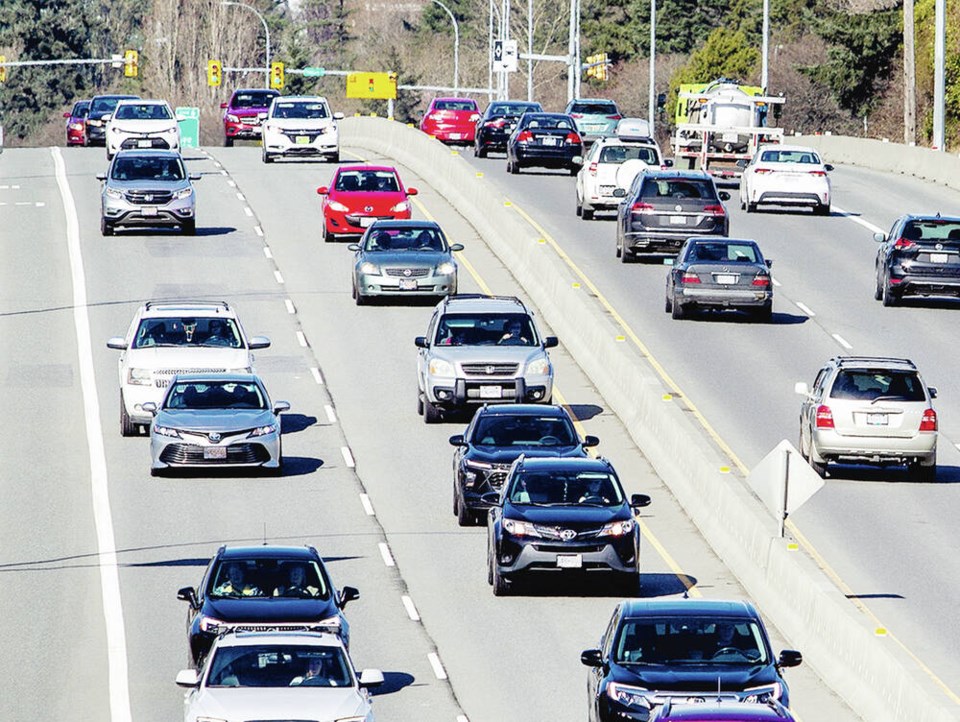I’ve covered a lot of ground during my nearly 50 years of driving. When I was young, and didn’t have the benefit of fully developed brain cells, I drove all the way from Prince Rupert to Victoria non-stop — pit stops excluded. Not a smart move. Long stretches of lonely roads with little stimulation are the arch-enemy of the tired driver. Fortunately for me the road conditions were excellent and highway traffic certainly wasn’t what it is today on B.C.’s roads.
I thought about that trip recently and it made me wonder if one type of road is actually safer than another.
The type of road you drive on and the route you take is something I suspect most drivers don’t think about all the time — but it’s worth considering. That’s because 95% of all transportation deaths occur as a result of driving. In terms of injuries, the number is over 99%. That’s more than all other forms of transportation, such as air, rail, water, combined.
So the safest road award winner is the highway. By definition any road we drive on is legally framed as a highway but what I’m talking about is what could be called a freeway, an expressway or a divided highway.
Why are highways safer than a regular road? Most of the reasons are obvious. With roads you are continually faced with vehicles travelling at different speeds and coming from different directions. On roads not only do you have to make your own decisions but you have to anticipate the decisions of other drivers much more frequently.
Other users such as pedestrians, joggers, pets as well as scores of new forms of transportation use roads. There are also more cars, packed closer together, heading in opposite directions. This leads to more navigation and distraction increasing the chances of a collision.
On a highway, the roadways tend to be wider with more ample shoulders for escape should the need arise. High volume highways also tend to be divided, separating traffic moving in opposite directions. Where they aren’t divided there are often centre medians — a recent crash on Highway 1 in Langford amply demonstrating their safety value.
Highways offer an “isolated” path of travel, mainly because of their extra width, clear markings and visibility. Pedestrians, cycles and slower forms of transport are often banned on many highways.
When exiting or entering a highway, you have long access and egress lanes that are usually well marked — except in Los Angeles, where they seem to relish their left hand side exit ways. Those still haunt me.
While you always have to be vigilant during lane changes on a highway, there is a much lower chance of other vehicles making sudden turns off or onto a highway.
Motorcycles are safer on highways for all of the above reasons but also because road surfaces tend to be smoother with fewer ruts and depressions that accumulate water or debris. Highways also offer the motorcyclist fewer curves, inclines and turns. According to the US National Highway Traffic Safety administration, 90% of motorcycle fatalities and injuries occur on non-highway roads.
Some reasons for highways being safer aren’t so obvious, though. On a regular road drivers often give in to bad habits more easily because they feel safer at a slower speed.
Rural roads are often less well maintained and many were constructed before modern road safety standards were in place, such as shoulders that offer an escape route. At the same time they are narrower and can also be lined with trees and ditches.
There is also a greater chance of striking an animal on a rural road and in isolated areas emergency responders may be a long ways off.
Highways can be intimidating for many drivers, but their construction and design are the safer alternative. No one should be deterred from the “scenic route” but be aware of its increased dangers and keep extra focus on your driving on that non-highway road.
Glove Box: Writing about roads versus highways made me wonder which was the longest street in Canada. The winner is Yonge Street in Toronto, which up until 1999 was rated by the Guiness Book of Records as the world’s longest at 1,896 kilometres, running from downtown Toronto to Rainy River on the Ontario-Minnesota border. That’s disputed though as other fact checkers claim a large part of the route was changed to Highway 11 in the 1990s. Nevertheless several travel websites still claim that the truncated Yonge is still the longest street at 56 kms. The world’s longest continually driveable highway is the Pan American Highway from Prudoe Bay Alaska to Tierra del Fuego — the southern tip of South America — clocking in at 30,000 kms.



